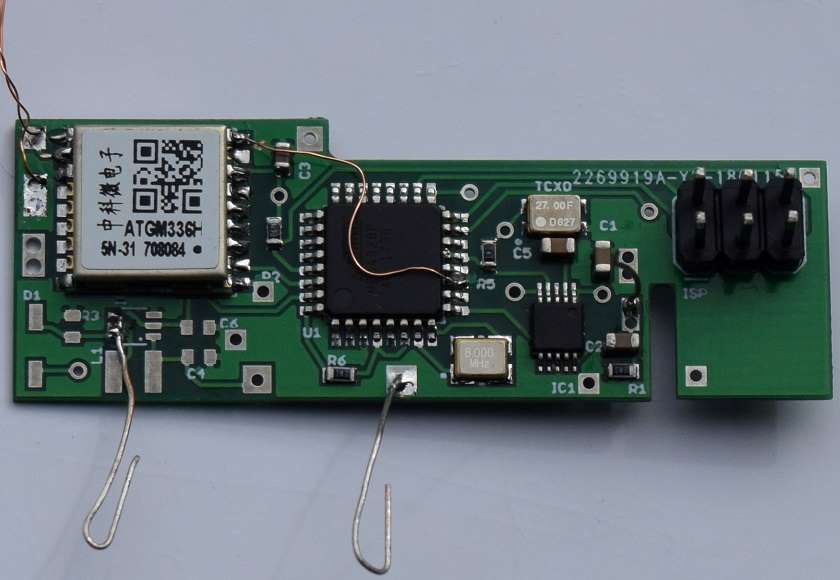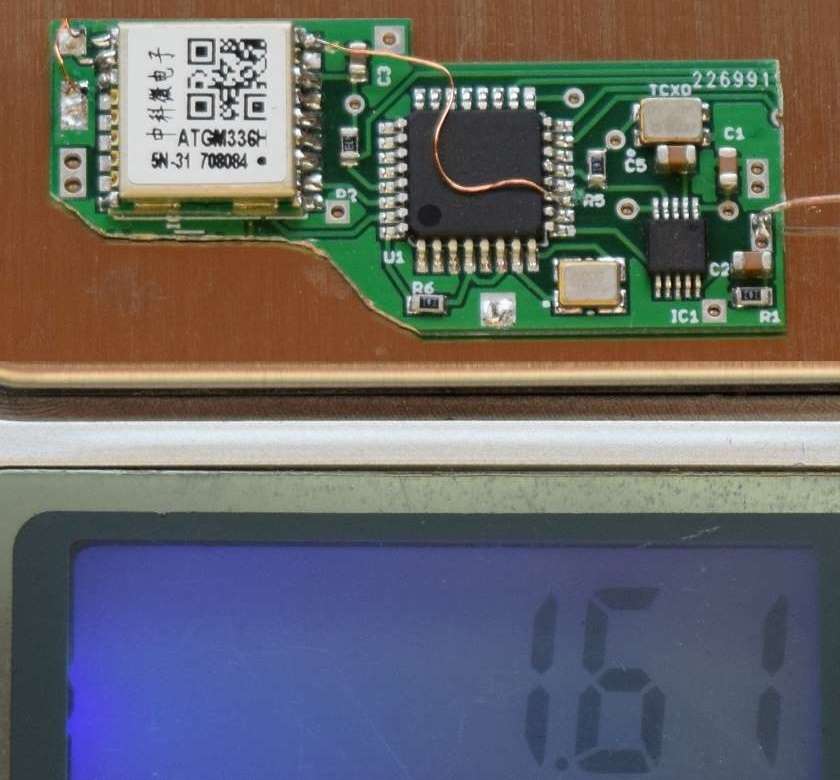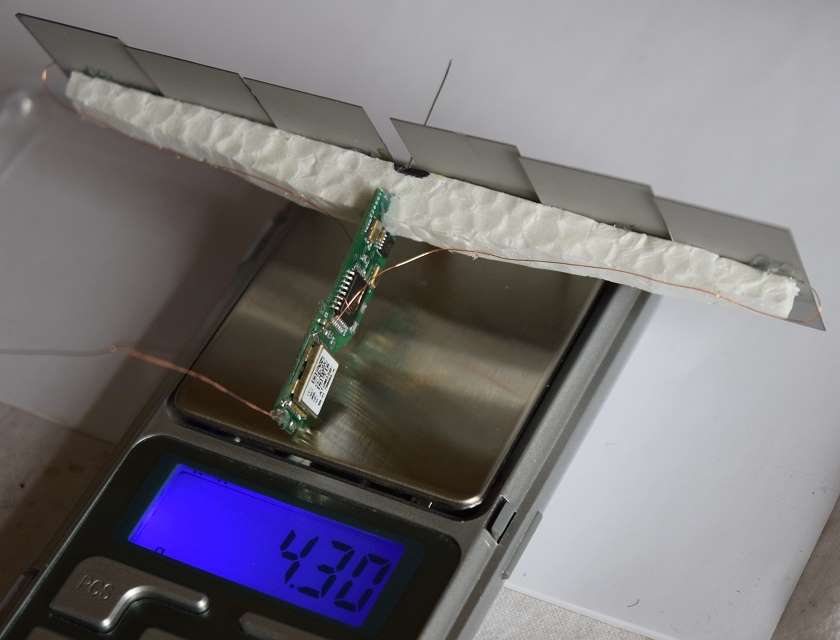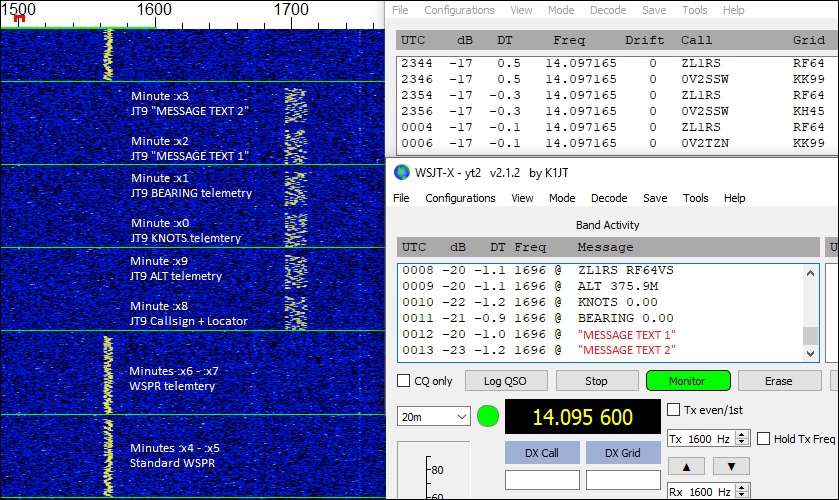High Altitude Balloon Flights Carrying HF Radio Telemetry
A miniature HF telemetry transmitter flying under a 'super pressure' party balloon.
After tracking recent Picospace balloon flights I got 'the bug' to fly some more of my own balloons. This time the aim is to reduce payload weight to gain extra altitude while still flying under a 36" diameter party balloon at a minimal cost. The following flights use lightweight 'tracker/telemetry' transmitters built following the concept of the QRP-Labs U3S transmitter, and running a special 'balloon version' of QRP-Labs U3S firmware.
Link to past flights BB01 to BB05 Link to flight BB06
Link to flight BB06 Link to flight BB07
Link to flight BB07 Link to flight BB09
Link to flight BB09 Link to flight BB10
Link to flight BB10

Balloon flight BB08 - launched on 21 April 2020 at 21:13 UTC
22 April 00:00 UTC ... it looks like the balloon burst just as it reached float altitude. Perhaps the same thing happened to BB07? They were both Qualatex balloons with 3 grams of free lift which may have resulted in more differential/internal pressure than the balloon envelope could withstand? The difference with this BB08 flight is that the transmitter is still working so we can see the altitude dropping. BB09 is nearly ready for bench tests and will be launched 'soon' ...
21 April 21:13 UTC ... unfortunately the 'attachment point' wire got slightly bent during the launch process (it is not easy to launch smoothly in the ever-present breeze here at our hill top QTH). The solar cells appear to be at about 10 degrees off being horizontal which will mean start up and shut down with about 28 degrees of sun angle rather than 18 degrees. However, despite that, the WSPR telemetry is working nicely, and the JT9 text messages are coming through ... if you have propagation, see if you can decode them.
06 April 22:20 UTC ... The BB08 tracker/telemetry transmitter is now on 'bench test'. There are some changes to the programming ... see below for the details. More pictures will be added when bench testing and the final assembly is complete.
Tracking on Habhub (Battery and Temperature sensors are not fitted, so ignore those readings. Altitude is in 20m increments) (Battery and Temperature sensors are not fitted, so ignore those readings. Altitude is in 20m increments)
Tracking on APRS

BB08 over-view:
Balloon: a 36" dia Qualatex silver balloon with enough hydrogen gas to provide very close to 3 grams of free lift over the total payload weight
Payload: a QRP-Labs U3S based transmitter sending WSPR mode tracking and JT9 mode information at 20mW on the 20m band
Transmitter: assembled on a 'full' PC board (see pic below). It is 'flying naked' (there is no insulation or other coating on the PCB)
Antenna: a halfwave dipole (0.1mm dia wire) supported on 4 pound fishing braid with the transmitter suspended at the feed point
GPS: the GPS reset system will be tested again but in a different configuration allowing two extra JT9 messages (just for interest)
GPS antenna: a 1575 MHz dipole made from 0.15mm diameter enamelled copper wire
Solar cells: six 39mm x 19mm 0.5V 0.12W solar cells. The 0.5V rated cells actually produce 0.6V each in bright sun, so 3.6V in total
Voltage regulator: none
Total payload weight (transmitter + solar cells + antenna): 1.61 + 2.69 + 0.93 = 5.23 grams
Anticipated 'float altitude': 9,900m (subject to external conditions like temperature and air pressure)
BB08 transmitter compliment:
Processor: ATmega328P-AU
Processor clock: 8MHz
Synthesiser: Si5351a
Synth reference: 27MHz TCXO
GPS: ATGM336H with an experimental reset system (see below)
Transmitter frequency:
The WSPR and JT9 signals can be received with a SSB receiver in USB mode tuned to the standard 20m band WSPR 'dial frequency' of 14.095600 MHz. The WSPR signal appears on the waterfall in the upper half of the WSPR band slot at about 1566Hz, and the JT9 appears at about 1700Hz (see the screen shot in the pictures below). The JT9 messages and GPS reset timing have been rearranged to fill up the 10 minute transmission 'frame' and to add two more plain text JT9 messages for extra interest.
Transmitter schedule:
Minute Transmission Transmission
:x4 Standard WSPR mode Standard WSPR mode
:x6 Special WSPR mode balloon telemetry (channel 02) Special WSPR mode balloon telemetry (channel 02)
:x8 JT9 using message 00 with QRP-Labs U3S tags #CS and #M6 - ZL1RS + the current 6 character Maidenhead locator JT9 using message 00 with QRP-Labs U3S tags #CS and #M6 - ZL1RS + the current 6 character Maidenhead locator
:x9 JT9 using message 01 with plain text and QRP-Labs U3S tag #AT - ALT #ATM - (altitude in meters) JT9 using message 01 with plain text and QRP-Labs U3S tag #AT - ALT #ATM - (altitude in meters)
:x0 JT9 using message 02 with plain text and QRP-Labs U3S tag #GS - KNOTS #GS - (speed in knots) JT9 using message 02 with plain text and QRP-Labs U3S tag #GS - KNOTS #GS - (speed in knots)
:x1 JT9 using message 03 with plain text and QRP-Labs U3S tag #GC - BEARING #GC - (course in degrees true) JT9 using message 03 with plain text and QRP-Labs U3S tag #GC - BEARING #GC - (course in degrees true)
:x2 JT9 plain text using message 04 - plain text message 1 (decode it if you can!) JT9 plain text using message 04 - plain text message 1 (decode it if you can!)
:x2 + 52s CW using message 05 - the letter "E" in Morse Code (see Experimental GPS Reset System information below) CW using message 05 - the letter "E" in Morse Code (see Experimental GPS Reset System information below)
:x3 JT9 plain text using message 06 - plain text message 2 (decode it if you can!) JT9 plain text using message 06 - plain text message 2 (decode it if you can!)
#AT, #GS and #GC are from the GPS output strings.
Experimental GPS reset system:
This uses the 'Band select' feature of the QRP-Labs U3S firmware as a reset pulse. The 'Band 0' output pin of the ATmega328P-AU processor is connected to the GPS module's reset pin and this gets a short "low" pulse with the firmware programed as follows:
'Mode' parameters:
Mode 0 Band = 2 Band = 2 Frequency = 014,097,166 Frequency = 014,097,166 Mode = WSPR Mode = WSPR Power = 13 Power = 13 Aux = 0 Aux = 0
Mode 1 Band = 2 Band = 2 Frequency = 014,097,166 Frequency = 014,097,166 Mode = WSPR (telemetry) Mode = WSPR (telemetry) Power = 06 Power = 06 Aux = 0 Aux = 0
Mode 2 Band = 2 Band = 2 Frequency = 014,097,300 Frequency = 014,097,300 Mode = JT9-1 Mode = JT9-1 Message no. = 00 Message no. = 00 Aux = 0 Aux = 0
Mode 3 Band = 2 Band = 2 Frequency = 014.097,300 Frequency = 014.097,300 Mode = JT9-1 Mode = JT9-1 Message no. = 01 Message no. = 01 Aux = 0 Aux = 0
Mode 4 Band = 2 Band = 2 Frequency = 014,097,300 Frequency = 014,097,300 Mode = JT9-1 Mode = JT9-1 Message no. = 02 Message no. = 02 Aux = 0 Aux = 0
Mode 5 Band = 2 Band = 2 Frequency = 014,097,300 Frequency = 014,097,300 Mode = JT9-1 Mode = JT9-1 Message no. = 03 Message no. = 03 Aux = 0 Aux = 0
Mode 6 Band = 2 Band = 2 Frequency = 014,097,300 Frequency = 014,097,300 Mode = JT9-1 Mode = JT9-1 Message no. = 04 Message no. = 04 Aux = 0 Aux = 0
Mode 7 Band = 0 Band = 0 Frequency = 014,097,300 Frequency = 014,097,300 Mode = CW Mode = CW Message no. = 05 Message no. = 05 Aux = 0 Aux = 0
Mode 8 Band = 2 Band = 2 Frequency = 014,097,300 Frequency = 014,097,300 Mode = JT9-1 Mode = JT9-1 Message no. = 06 Message no. = 06 Aux = 0 Aux = 0
'Message' parameters:
Message 00 #CS #M6 #CS #M6
Message 01 ALT #ATM ALT #ATM
Message 02 KNOTS #GS KNOTS #GS
Message 03 BEARING #GC BEARING #GC
Message 04 'plain text message 1' 'plain text message 1'
Message 05 E E
Message 06 'plain text message 2' 'plain text message 2'
This is programmed as: #CS #M6[]ALT #ATM[]KNOTS #GS[]BEARING #GC[]plain_text_message_1[]E[]plain_text_message_2 #CS #M6[]ALT #ATM[]KNOTS #GS[]BEARING #GC[]plain_text_message_1[]E[]plain_text_message_2
The Mode 7 'Band' parameter sends pin 11 of the ATmega328P-AU low for the time taken to send Message 5 (the letter E) in Morse code (a few hundred mS) which resets the GPS. For the rest of the 10 minute 'Frame', the Band 0 output on pin 11 remains "high".
Decoding and tracking:
The WSPR telemetry capture, decoding and forwarding is done by a version of Aaron M7REG's python script (forked from SM3ULC) with further modifications by Andy VK3YT and myself. Thanks also to Jim N2NXZ for the set-up tips that saved a lot of potential grief.

The full PCB during testing. The programming header to the right hand side is cut off before the flight

The trimmed down PCB weighing in at 1.61 grams including GPS dipole. The 0.15mm diameter enamelled wire snaking across the ATmega328P-AU connects the processor 'Band 0' output to the GPS reset pin

An overall view of the solar cells and transmitter

A screen shot of the waterfall showing the WSPR and JT9 trails with their the associated decodes
The morse code letter E sent between minute :x2 and :x3 during the reset action is too short to be seen on the WSJT-X waterfall

More BBxx series balloon flights are coming ...
|



